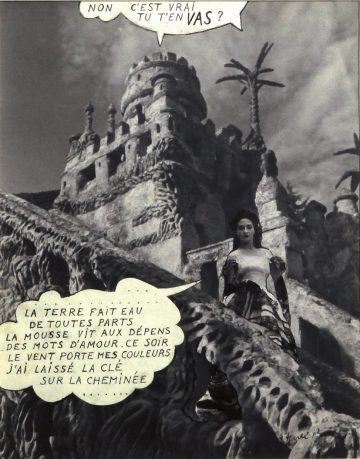André BRETON 1896-1966
André Breton was born in Tinchebray in 1896. He studied medicine in 1913, but was also passionate about poetry. His first poems appeared in the review La Phalange in 1914. Love, dreams and the unconscious, as well as objective chance, are recurring themes in his work. He was also one of the first to experiment with automatic writing, in which neither consciousness nor willpower intervene. He was close to the members of the Dada movement, with whom he kept up a correspondence despite censorship in 1917. He later departed from them to found the principles of Surrealism in his 1924 manifesto. He described Surrealism as “pure psychic automatism, through which the intention is to express, either verbally or in any other way, the real workings of thought”. His writings expressed a desire for experimentation and an idea of revolt. He defended Surrealism until the end of his life in 1966.
His many writings were recognised during his lifetime, and continue to fascinate readers around the world. In 1919, he created the review Littéraire, and his first collection of poems Mont de Piété. Produced using the technique of automatic writing, he published Les Champs Magnétiques in 1920. He also wrote a more critical Second Manifesto of Surrealism in 1929. In 1941, together with Marcel Duchamp, he founded the journal VVV. Among his many writings, Nadja (1928), L’amour Fou (1937) and Arcane 17 (1944) were inspired by his amorous encounters. He organised the first collective Surrealist exhibition in 1925 at the Galerie Loeb in Paris, as well as the first international Surrealist exhibition in 1938 at Georges Wildenstein’s Galerie des Beaux-Arts in Paris.
In 1931, André Breton discovered the ideal Palace thanks to Brunius’ advice, and became one of its main admirers, visiting it regularly thereafter. It was André Breton who made many Surrealists aware of the existence of the work of Postman Cheval.
Tragic à la manière des Comics. Hommage au Facteur Cheval 1943
Tragic à la manière des comics is a photomontage. In a dreamlike dialogue, photographer Denise Bellon descends the staircase while the Tour de Barbarie and its palm tree are personified by a comic book bubble in the background. “Are you really leaving?” asks the palace. The woman replies poetically: “The Earth is making water on all sides The Moss lives at the expense of words of love Tonight the wind carries my colours I left the key on the mantelpiece.” As if in symbiosis with the nature so often depicted in the palace, the photographer is drawn outside, yet suggests that she inhabits the building. Although the Postman Cheval wanted to be buried in the Egyptian temple, this architecture had no other vocation than to be admired as a monument. Straight out of a dream, the palace echoes the writings of André Breton, often inspired by dreams and the unconscious. When he visited the palace in 1931 and 1949, he wrote: “Le facteur Cheval (…) remains the undisputed master of medieval sculpture and architecture”. In 1932, he paid tribute to him in a poem entitled Le révolver à cheveux blancs.

